![]()
![]()
![]()
Use LEFT and RIGHT arrow keys to navigate between flashcards;
Use UP and DOWN arrow keys to flip the card;
H to show hint;
A reads text to speech;
46 Cards in this Set
- Front
- Back
- 3rd side (hint)
|
This is an example of what a data table looks like. By convention (tradition) the independent variable is in the left column.
NY State Regents Exam June 2004 |
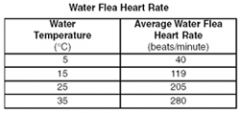
(IMAGE)
|
None
|
|
|
This is an example of a line GRAPH.
NY State Regents Exam June 2005 |
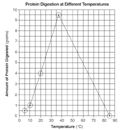
(IMAGE)
|
None
|
|
|
This is what a graduated cylinder looks like. It is most commonly used to measure the volume of a liquid.
NY State Regents Exam January 2005 |

(IMAGE)
|
None
|
|
|
Diagram of an ATOM, showing the nucleus (protons and neutrons) and the electrons.
(C)www.scienceaid.co.uk. http://www.scienceaid.co.uk/chemistry/basics/theatom.html |
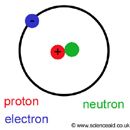
(IMAGE)
|
None
|
|
|
Paper CHROMATOGRAPHY.
(c) Dorling Kindersley http://www.dkimages.com/discover/Home/Science/Physics-and-Chemistry/Experiments/Unassigned/Unassigned-006.html |
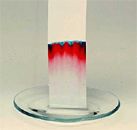
(IMAGE)
|
None
|
|
|
This is an example of an electronic balance used to measure mass.
© American Weigh http://www.americanweigh.com/product_info.php?products_id=42 |
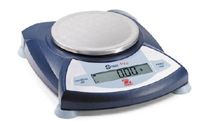
(IMAGE)
|
None
|
|
|
This picture shows some structures typical of BACTERIA.
© British Broadcasting Corporation http://www.bbc.co.uk/schools/gcsebitesize/science/aqa/human/defendingagainstinfectionrev2.shtml |
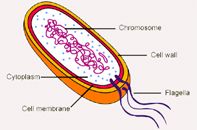
(IMAGE)
|
None
|
|
|
Carbon with its 4 valence electrons.
(c) Dorling Kindersley http://www.dkimages.com/discover/previews/740/55147.JPG |
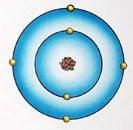
(IMAGE)
|
None
|
|
|
This is one example of a diagram. You already know what a VENN diagram looks like, so that's 2 examples. Can you name the process depicted? An example of an "organic compound?"
NY State Regents Exam June 2004 |
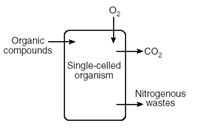
(IMAGE)
|
None
|
|
|
This is what a triple-beam balance looks like.
(c) Scales Now http://www.scalesnow.com/ohaus-scales.htm |

(IMAGE)
|
None
|
|
|
This is an example of a thermometer.
© D. Edmunds & Co http://www.thetipsbank.com/thermometer.htm |

(IMAGE)
|
None
|
|
|
Enzyme
(The substance labeled "catalyst") NY State Regents Exam June 2001 |
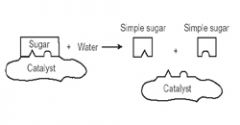
(Image)
|
None
|
|
|
Carbon dioxide molecule
© 2007 The Kauaian Institute http://kauaian.net/blog/wp-content/themes/default/images/sushi/co2molecule.jpg |
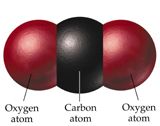
(IMAGE)
|
None
|
|
|
Animal Cell Parts
A - Ribosomes B - Cell membrane C - Nucleus D - Cytoplasm E - Mitochondria The American Physiological Society (modified) http://www.the-aps.org/education/lot/cell/cell-ebration.html |
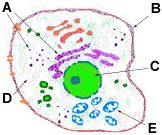
(IMAGE)
|
None
|
|
|
Chain (a group of simpler molecules linked together to make more complex molecule).
Proteins, starches, nucleic acids, are all chains. |

(IMAGE)
|
None
|
|
|
Plant Cell Parts
A - Cell Wall B - Vacuole C - Cell membrane D - Cytoplasm E - Chloroplasts F - Nucleus G - Mitochondria Shannan Muskopf (modified) www.biologycorner.com/bio1/cell.html |

(IMAGE)
|
None
|
|
|
Compound microscope. A microscope consisting of two lenses (A, B, in picture) that multiply the magnification power of a single lens.
Mrs. Dotson's Biology Page http://www.geocities.com/auburngirl71/diagram.htm |
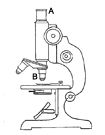
(IMAGE)
|
None
|
|
|
Compounds. Two or more chemical elements chemically bonded. Can be covalent bonds, ionic bonds, etc.
Virginia Science Standards of Learning Test (modified) http://www.fcps.k12.va.us/FranklinShermanES/Ristig/Matter-5.html |

(IMAGE)
|
None
|
|
|
Dichotomous key. Identify Species X...
NY State Regents Exam June 2006 |
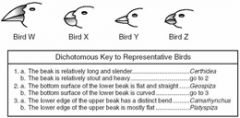
(IMAGE)
|
None
|
|
|
Diffusion
NY State Regents Exam (modified) August 2002 |

(IMAGE)
|
None
|
|
|
DNA
NY State Regents Exam January 2003 |

(IMAGE)
|
None
|
|
|
Molecules. Can be single element or combinations of different elements. Must be covalently bonded. Ions do not form molecules.
Virginia Science Standards of Learning Test (modified) http://www.fcps.k12.va.us/FranklinShermanES/Ristig/Matter-5.html |
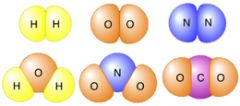
(IMAGE)
|
None
|
|
|
One-celled organism. Individual living things made of a single cell. From left: Euglena, amoeba, paramecium.
Massachusetts Dept. Of Education http://www.doe.mass.edu/mcas/question.asp?mcasyear=2006&district=488&school=&grade=08&subjectcode=SCI&questionnumber=20 |
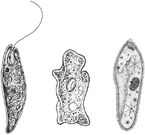
(IMAGE)
|
None
|
|
|
pH Scale
Manitoba Conservation (modified) http://www.gov.mb.ca/conservation/annual-report/soe-reports/soe95/air.html |

(IMAGE)
|
None
|
|
|
Photosynthesis. Note the "inputs" (Light, H20, CO2) and the "outputs" (O2, glucose). The structure in which this occurs is called the chloroplast.
NY State Regents Exam June 2002 |
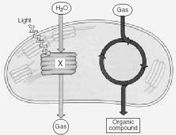
(IMAGE)
|
None
|
|
|
Protein. Start with a chain of amino acids, which can then be folded in a particular way to give the protein its final, 3D shape.
Wikipedia (modified) http://en.wikipedia.org/wiki/Rosetta@home |

(IMAGE)
|
None
|
|
|
Protein building. At the ribosomes, the code contained in mRNA is translated into a chain of amino acids.
from: M. J. Malachowski, Ph.D. http://fog.ccsf.cc.ca.us/~mmalacho/physio/oll/Lesson2/intro2P.html |
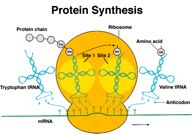
(IMAGE)
|
None
|
|
|
Shape of protein. Proteins come in an immense variety of shapes and sizes, all related to their specific functions.
Essential Cell Biology 2/e (Garland Science 2004) (modified) http://fig.cox.miami.edu/~cmallery/255/255prot/ecb4x9.jpg |
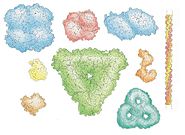
(IMAGE)
|
None
|
|
|
Starch. A chain of glucose molecules. A typical starch molecule can consist of literally thousands of these glucose molecules linked together.
University of Manitoba (modified) http://www.umanitoba.ca/Biology/BIOL1020/lab2/biolab2_2.html |

(IMAGE)
|
None
|
|
|
Stereoscope
Aunet Scientific http://aunet.com.au/stereo_microscope.htm |
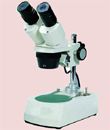
(IMAGE)
|
None
|
|
|
A - Testes (sperm production)
B,E,F - Glands (secrete chemicals) C - Sperm duct (Sperm transport) D - Bladder (Urine Storage) G - Urethra (Releases sperm) H - Tip of penis (Final exit point for sperm) The sperm, along with the chemicals secreted by various glands, make up the semen. NY State Regents Exam June 2007 |
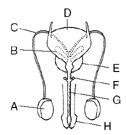
(Image)
|
|
|
|
Food Web.
Energy for a food web starts with the sun. Decomposers recycle MATTER. NY State Regents Exam June 2002 |
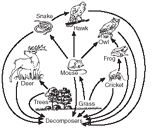
Image
|
|
|
|
Dropping cover slip at an angle onto specimen in preparing a wet-mount slide. Minimizes air bubbles.
NY State Regents Exam January 2006 |

(Image)
|
|
|
|
Antibody/Antigen. The shape of the antibody (B) must match with the shape of an antigen (A).
National Institute of Allergy & Infectious Disease (modified) www.niaid.nih.gov/final/immun/immun.htm |
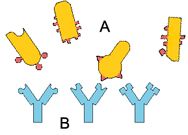
(IMAGE)
|
None
|
|
|
Breakdown. An enzyme breaks down sucrose (more complex) into glucose and fructose (less complex molecules).
Paul Slichter, Gresham HS (modified) http://ghs.gresham.k12.or.us/science/ps/sci/ibbio/chem/notes/chpt8/chpt8.htm |
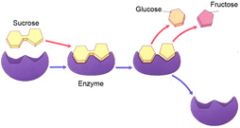
(IMAGE)
|
None
|
|
|
Chemical signals. Chemicals (A) produced in one cell (X) that "signal" a response in another cell (Y). Neurotransmitters are one example.
NY State Regents Exam June 2004 |
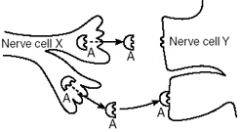
(IMAGE)
|
None
|
|
|
Engulf. The cell membrane "pinches in" and around a particle (food, for example) and takes it in.
Larry MacPhee, Northern Arizona University (modified) http://jan.ucc.nau.edu/~lrm22/lessons/endocytosis/endocytosis.html |
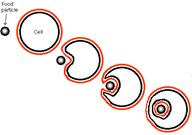
(IMAGE)
|
None
|
|
|
Feedback mechanism. AKA control mechanism.
NY State Regents Exam August 2002 |
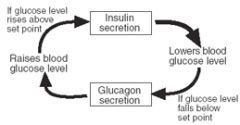
(IMAGE)
|
None
|
|
|
Infectious agent. AKA pathogen. Viruses, bacteria, protists, fungi, etc. Most are microscopic, one-celled organisms.
San Diego Natural History Museum http://www.sdnhm.org/exhibits/epidemic/teachers/museum-microbe.html |

(IMAGE)
|
None
|
|
|
Pancreas (B). Functions as both an endocrine gland (hormones) and a digestive organ (digestive enzymes). Located behind the stomach (A). Gall bladder (C) stores bile from the liver (not pictured).
(modified) U.S. National Cancer Institute's Surveillance, Epidemiology and End Results (SEER) Program http://training.seer.cancer.gov/module_anatomy/unit6_3_endo_glnds4_pancreas.html |
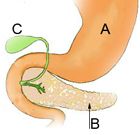
(IMAGE)
|
None
|
|
|
Receptors (A). Molecules, typically found on cell membrane surfaces, that receive chemical messages from another cell. Pictured here is a cell receiving a signal from a nerve cell.
©Nobel Web AB 2007 (modified) http://nobelprize.org/nobel_prizes/medicine/laureates/2000/press.html |
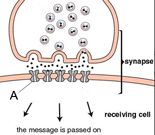
(IMAGE)
|
None
|
|
|
Virus. A typical virus consisting of little more than a protein coat (capsid) surrounding the virus's genetic material (DNA or RNA).
©Thomson Learning, Inc. http://www.dwm.ks.edu.tw/bio/activelearner/23/ch23c1.html |
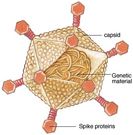
(IMAGE)
|
None
|
|
|
Enzyme Action. Enzymes work best at an optimum set of conditions as shown in the graph. On the X axis are variables that can affect enzyme action, which include temperature and pH.
NY State Regents Exam June 2004 |
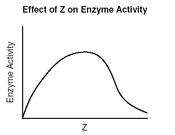
(IMAGE)
|
|
|
|
Levels of organization of an organism. Outside of "organ systems" is the individual organism. Pay attention to the order.
NY State Regents Exam June 2007 |

(IMAGE)
|
|
|
|
Osmosis in an onion cell. When the cells (A) are placed in saltwater solution, water diffuses OUT of the cell, causing the cell membrane and cytoplasm to shrink away from the cell wall (B)
NY State Regents Exam August 2005 |
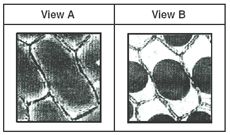
(IMAGE)
|
|
|
|
Synthesis. Two simpler molecules ("substrates") are joined by the enzyme to form a more complex "product."
©Chem4kids.com (modified) http://www.chem4kids.com/files/bio_enzymes.html |

(IMAGE)
|
|

